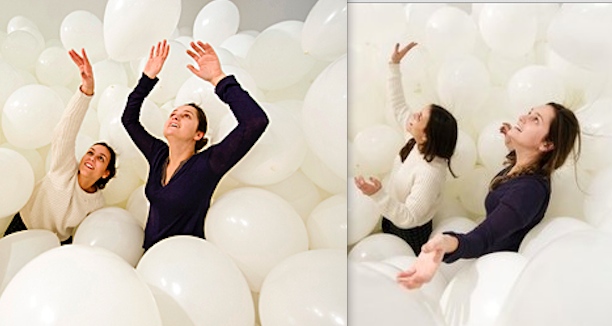Hello everyone,
My university’s second term has come to its end, and I will be going back to Greece to spent the easter holidays with my family and friends. The good news is that I will try and keep up with my blog, focusing on the many interesting art events currently happening in Athens. The bad news is that because I don’t know the exact date that I will be coming back to London, I will probably have to miss some great art exhibitions happening here at the moment. As a result of that, I have selected my top three exhibitions that I really wanted to visit but did not have the chance. I am hoping to be able to visit them when I come back, but in case I don’t, here they are; make sure that you take a look , be inspired and if you decide to visit them, let me know what you thought!
Momentum, at the Barbican Centre (Images courtesy of Barbican Centre)

“Momentum consists of twelve pendulums that activate light and sound as they swing, drawing attention to the Curve’s vast arc, inviting you to journey through the space guided by your heightened senses. Each pendulum has been meticulously designed and built using steel, aluminium, and custom electronics. The sound is individual to each pendulum, prepared and tuned to seamlessly resonate as they move within the Curve”. Momentum creates an unique environment that has its foundations in detailed research, sophisticated computer technology and mechanical expertise. Yet, the effect is to create a space that feels wondrously transformed, one which you are invited to experience and explore.” (information taken from: barbican.org.uk)
Sensing Spaces: Architecture Reimagined at the Royal Academy of Arts
“Some of the most creative architectural minds from around the world have come to the RA, and we’ve set them a challenge: to give you a new perspective on architecture. ‘Sensing Spaces: Architecture Reimagined’ sees our Main Galleries transformed by a series of large scale installations. As you respond to different structures, textures, lighting, scents and colours, we invite you to consider some of the big questions about the nature of architecture. How do spaces make us feel? What does architecture do for our lives?” (royalacademy.org.uk/exhibition/4)
Martin Creed ‘Whats the point of it” Hayward Gallery (Images courtesy of Hayward Gallery)

A survey of Martin Creed’s playful, thought-provoking art.Over the past two and a half decades British artist Martin Creed has pursued an extraordinary path by confounding the traditional categories of art.Winner of the 2001 Turner Prize, Creed is recognised around the world for his minimalistic approach that strips away the unnecessary, but preserves an abundance of wit, humour and surprise.Crossing all artistic media and including music, his art transforms everyday materials and actions into surprising meditations on existence and the invisible structures that shape our lives. This exhibition includes work containing nudity, bodily functions and some adult content and will be the first major survey of Martin Creed’s work, spanning its most minimal moments and extravagant room-sized installations.”
(Information from: southbankcentre.co.uk)
I really hope that this post will motivate you to go and visit these three wonderful exhibitions. If you do, please comment below and tell me what you thought of them, I would really appreciate it.
Thanks for reading,
Elli




